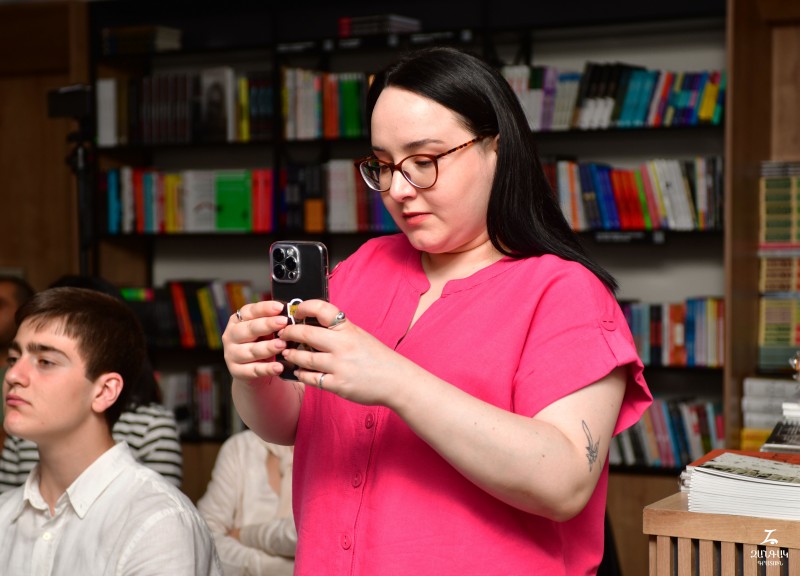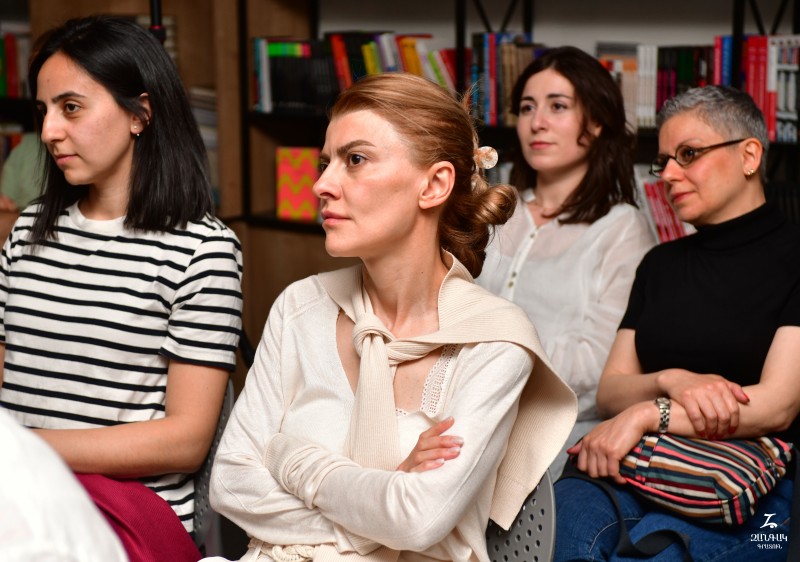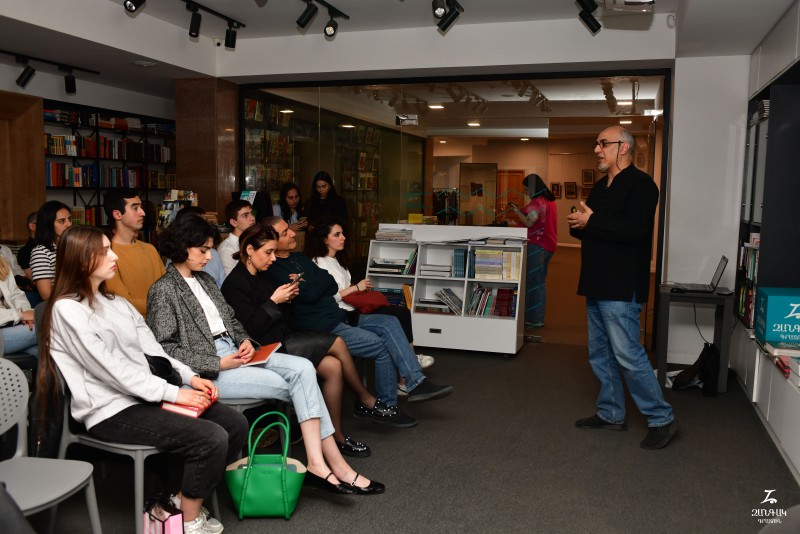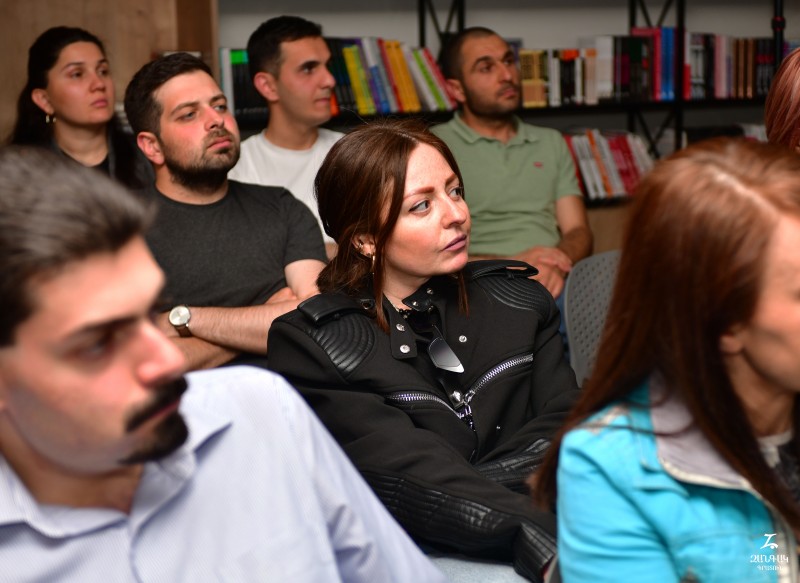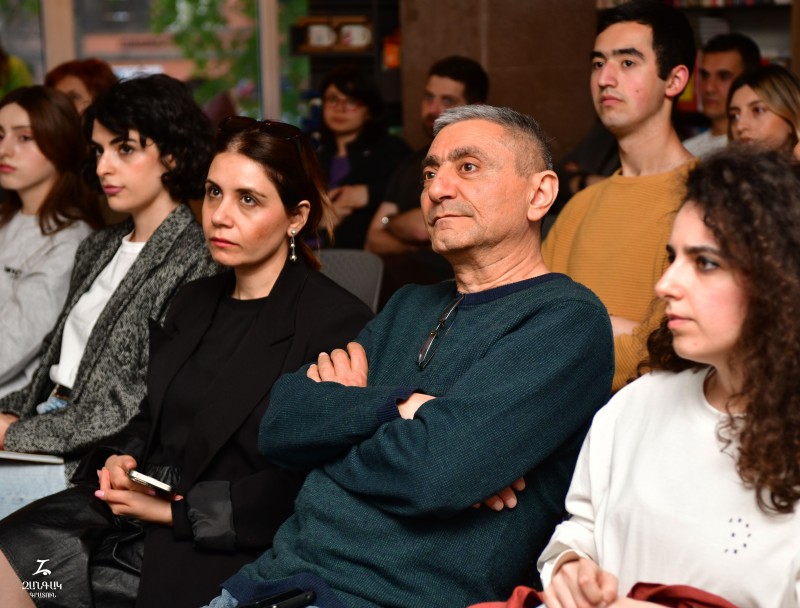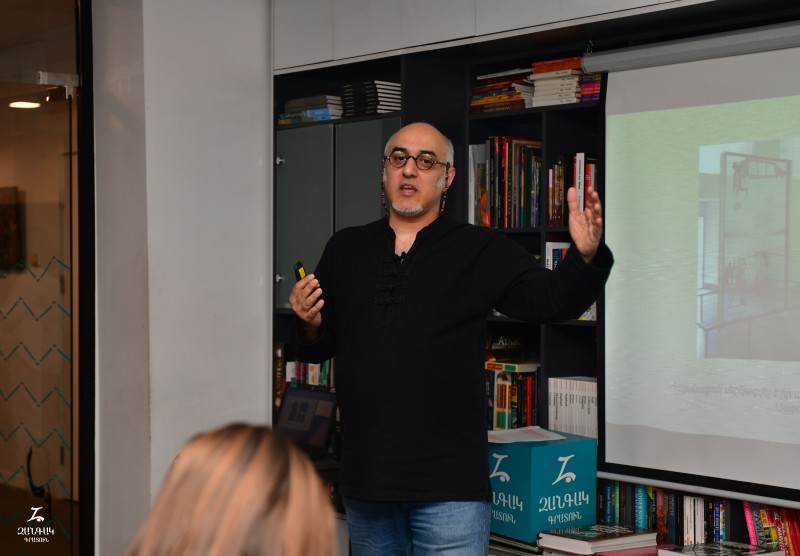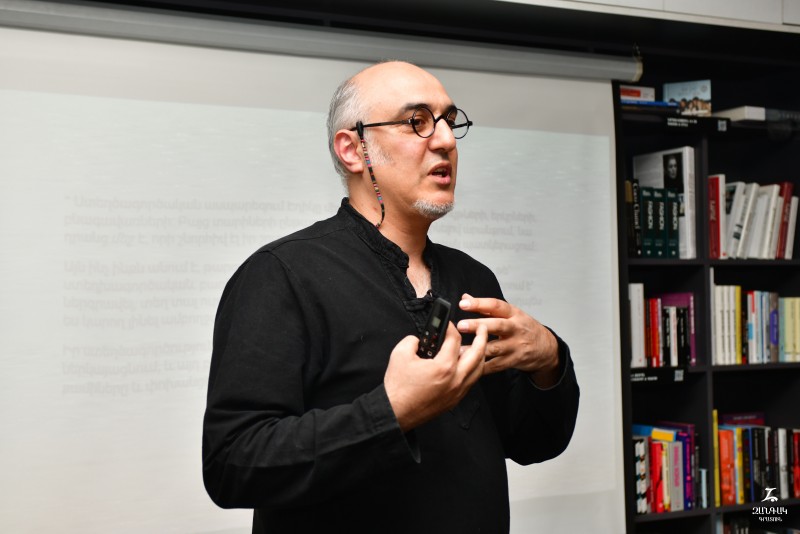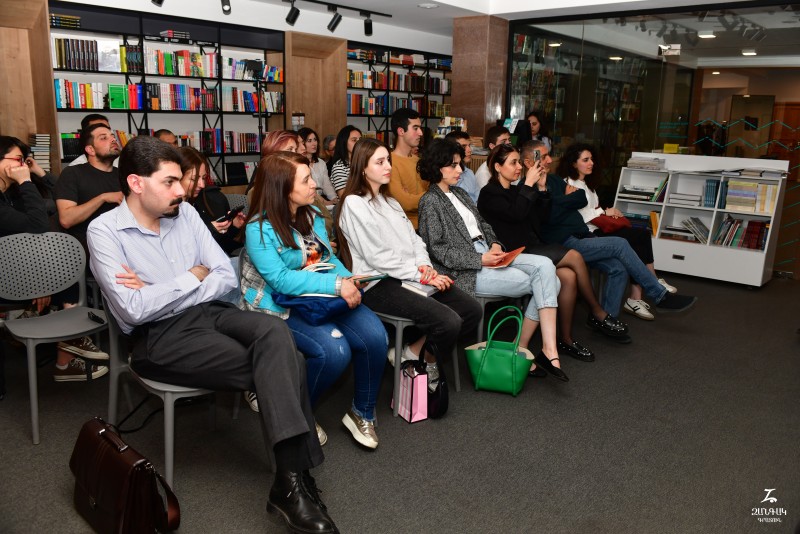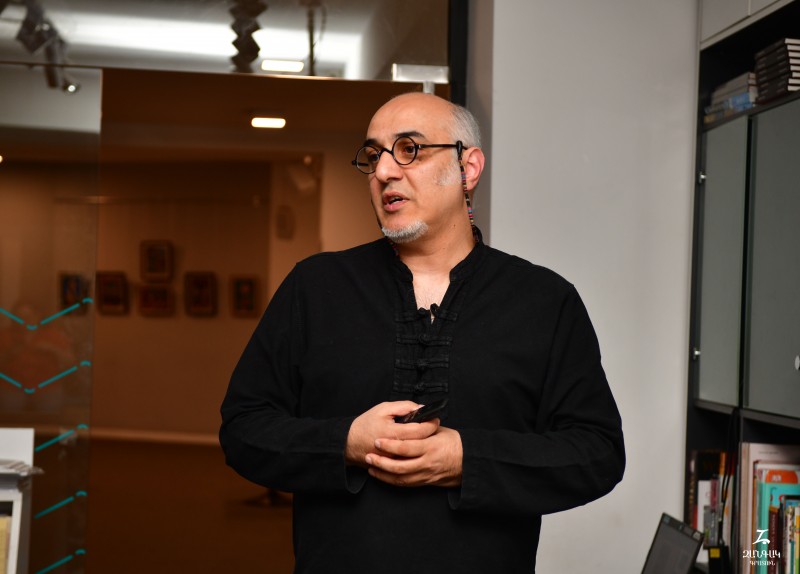My creative approach follows a structured randomness. Edik Poghosyan, the art director of Newmag Publishing House delivered an open lecture at the "Zangak" library (Photos)
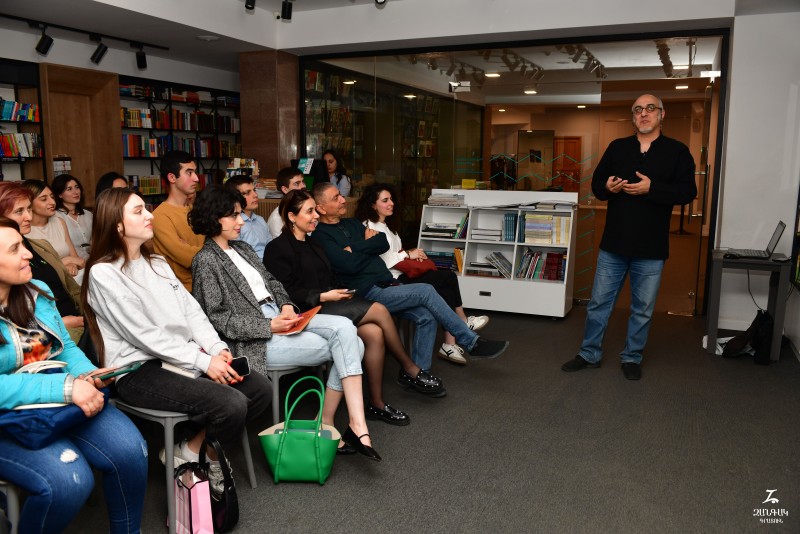
The lecture, titled "Direct and Indirect Paths of Experiencing Art," was part of Newmag's month-long series of events. Despite being scheduled for a shorter duration, the lecture extended beyond two hours.
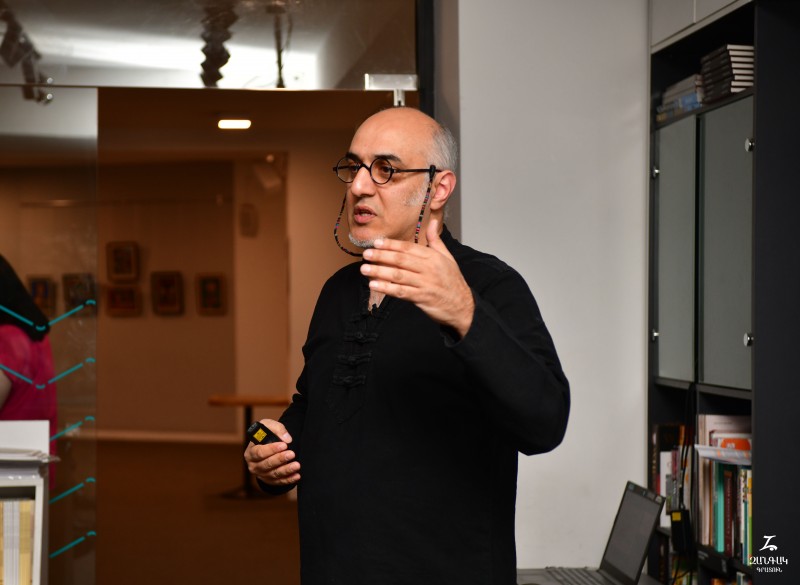
The lecture commenced with an exploration of direct art perception. As per the speaker's insights, the notion of direct art perception underscores the significance of immediate, emotional, and intuitive reactions evoked by art. These responses allow viewers to engage directly with the essence of the artwork, bypassing the necessity for contextual or historical understanding.
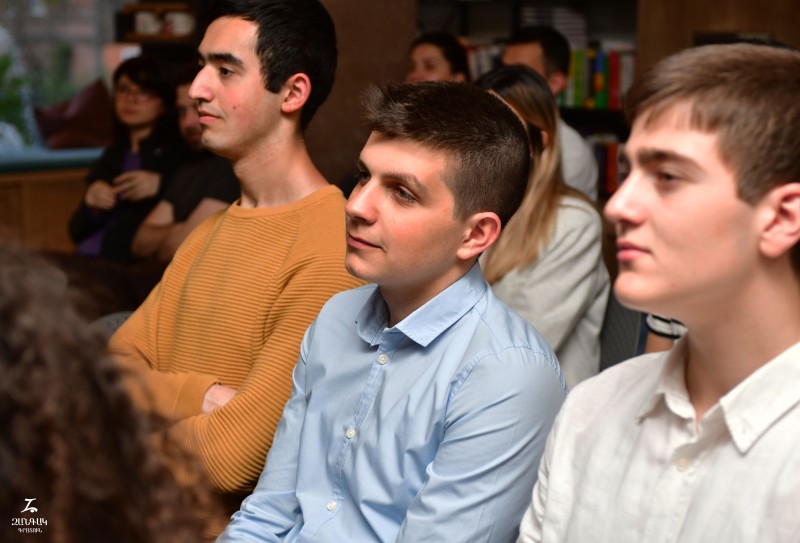
According to him, it's about experiencing art "as it is." In essence, art can elicit an internal, sensory response that doesn't necessitate intellectualization for understanding and profound feeling. The direct perception of art democratizes it, rendering it accessible to all, irrespective of their level of knowledge and experience.
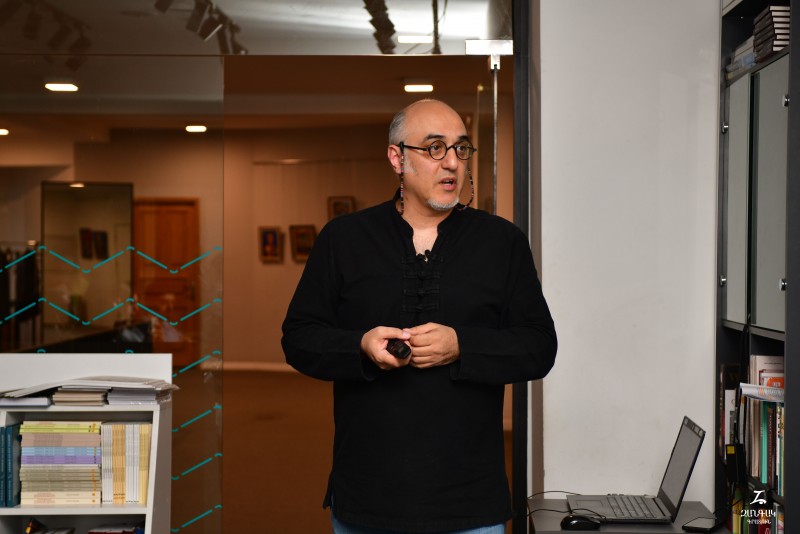
"I place significant emphasis on direct perception, on the viewer's interpretation and emotional connection to the artwork. Working predominantly with rusty metals, I recall an incident during an exhibition at the Cafesjian Art Center where a family visited on a Sunday. As the father approached my works, he inquired about their nature. I suggested we explore them together, prompting him to share his thoughts and feelings upon viewing them. His response was striking: 'They appear weathered, mere gestures. In our cemetery, the yards are adorned with similar gestures.' Here, the material became localized. These rusted metals are deeply intertwined with post-Soviet life, symbolizing the decline of industry and resonating with the makeshift structures found in self-built houses and fences."
"Well, he's like us, once more, he's lived life, he's weathered, he's like us..." I replied, nodding in agreement. I observed a glint in his eyes as he pondered, "Is that truly what I'm feeling?" I affirmed his intuition. Upon encountering the former director of Matenadaran at the same exhibition, he likened the artworks to Armenian fields scorched by the sun. This interconnectedness, from the esteemed library director to an ordinary individual, fascinated me. It enabled me to articulate my sentiments through my garden works."
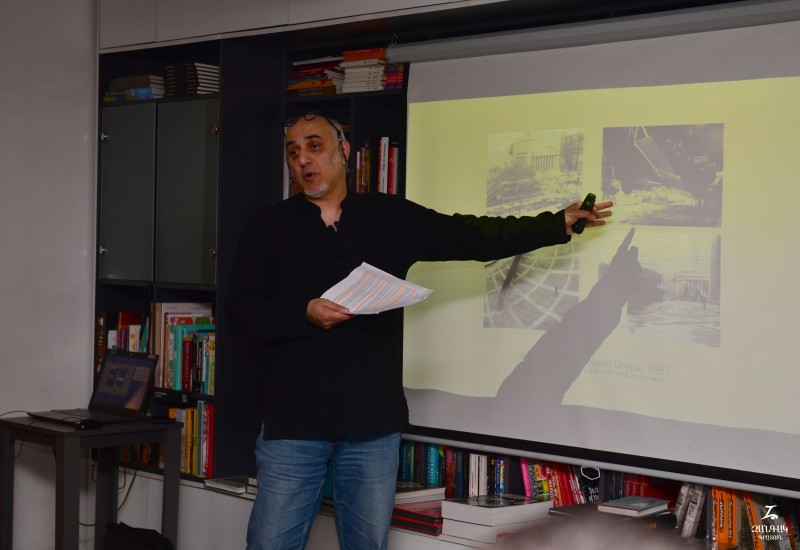
Edik perceives his approach to work as a curated assortment with deliberate randomness. He explains that while he views all materials as inherently random, the selection process is purposeful, consciously choosing whether to incorporate or reject certain materials each year. For one project, he scoured various regions of Artsakh to source metal materials, each bearing unique and captivating historical narratives. One of these materials was later featured on the cover of Narine Kroyan's book "Time of the Flies," curated by Edik Poghosyan.

Speaking about the evolution of art throughout the centuries, he noted that from the early Renaissance onward, there has been a cyclical pattern where viewers were mere spectators, passively receiving stories told by others, with each story concluding in a closed loop. As centuries passed, the form of artistic expression also evolved. By the 20th century, art was no longer confined to explanation within a frame; rather, its meaning was co-created through the interaction between the artwork and the viewer. This shift marked a departure from narrative and one-way communication toward a dynamic exchange of creativity.
In contrast to the concept of direct perception of art, the notion of indirect perception, as posited by the artist, underscores the intricate interplay between the artwork, the viewer, and various influencing factors. It accentuates the significance of cultural background, personal experiences, and intellectual frameworks in shaping the perception of art. Here, art perception is mediated through layers of context, interpretation, and subjective experience.
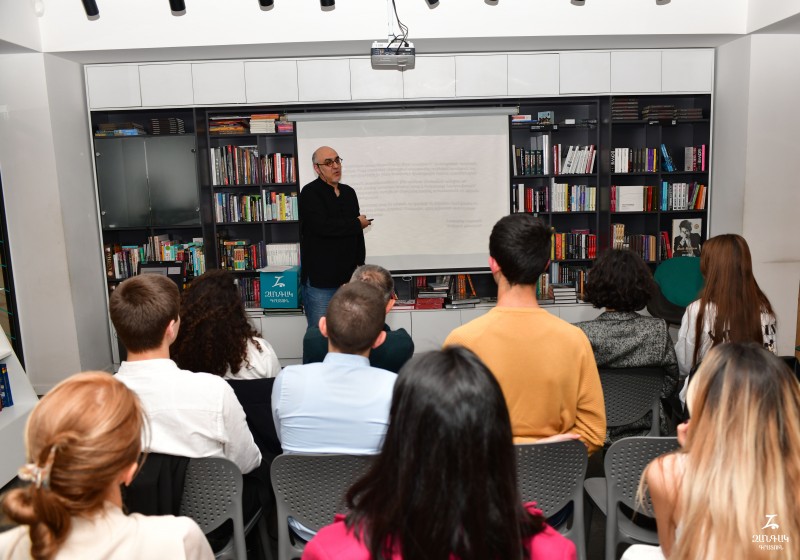
"Allow me to elucidate using the analogy of text perception. In literature, we encounter the layers of text, context, subtext, and pretext. Similarly, in the realm of art, we encounter the 'text'—the canvas, the 'subtext'—the underlying thoughts expressed by the artist, and the 'pretext'—the general knowledge surrounding the artwork. I hold a deep appreciation for indirect perception, and through my art, projects, designs, and discussions about them, I endeavor to cultivate a new cultural ethos and unearth new societal layers, thereby fostering a reevaluation of art and design, encouraging their perception in novel ways," remarked the designer.
This concept also underscores the significance of interpretive communities in art—groups that utilize specific methods of understanding and interpreting artworks. These communities may consist of historians, art critics, enthusiasts, and general audiences, each offering unique perspectives and biases.
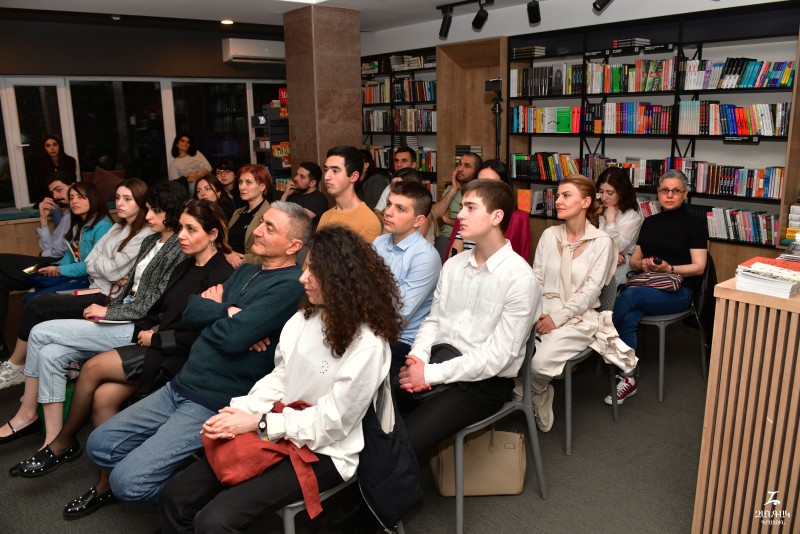
According to Edik Poghosyan's observation, all of this evidence suggests that art is not merely a passive object of aesthetic observation—rather, it is an active participant engaged in an ongoing dialogue with viewers. This dialogue unfolds within a complex web of both direct and indirect perceptions. However, indirect perception does not negate the role of individual viewer perception; rather, it acknowledges that it must be accompanied.
"I believe that we, the Newmag team, have endeavored to maintain this ongoing dialogue with our readers in various ways. Through experimentation and discernment, we have strived to distinguish between what is incorrect and what is correct. We have reached a juncture where, in terms of both content and visual presentation, as well as in our approach to text translation, we sustain a dialogue with our readers. Regardless of who collaborates with us, we endeavor to maintain the Newmag-like approach," stated the art director of Newmag Publishing House.
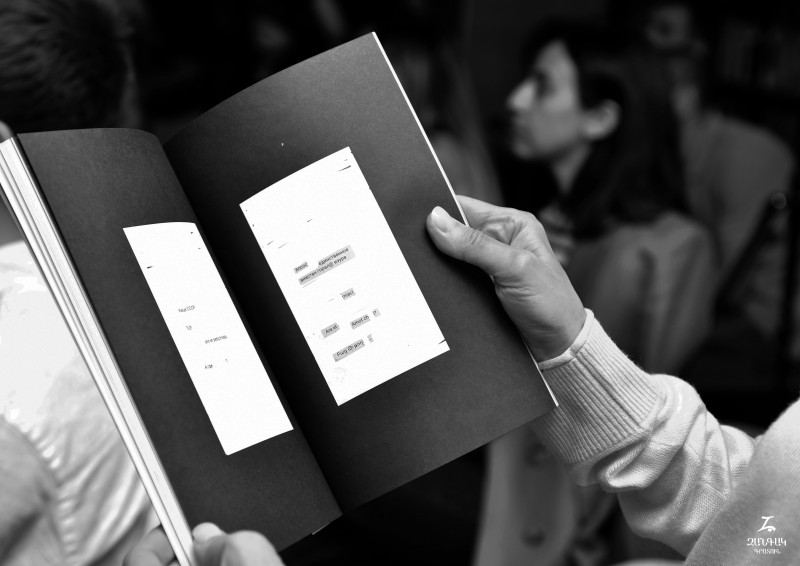
During the lecture, Edik Poghosyan shared insights into his professional journey. "I've dabbled in various fields—it's never a dull day," he quipped. "Born Armenian but raised in Iran, I currently reside in Armenia. My academic background is in painting, and I've worked as a graphic designer and caricaturist. Presently, I also engage in translating Iranian poetry."
"In 2007, I relocated to Armenia, which marked a significant transition in my life. Initially, I struggled to integrate into Armenian society; there was a palpable sense of disconnect. I lacked shared experiences with society, unsure of how to communicate or what humor to employ. It was a period of existential crisis for me. With my family in Iran and myself in the Republic of Armenia, I attempted to write, but my efforts yielded sentimental and trivial results. Recognizing my limitations as a writer, I shifted my focus to translating Iranian poetry."
"Through this endeavor, I discovered the fascinating interplay between various artistic forms—singing, painting, graphic design, text, and translation. My acquaintance with Gnel Nalbandian further deepened my appreciation for the art of working with text."
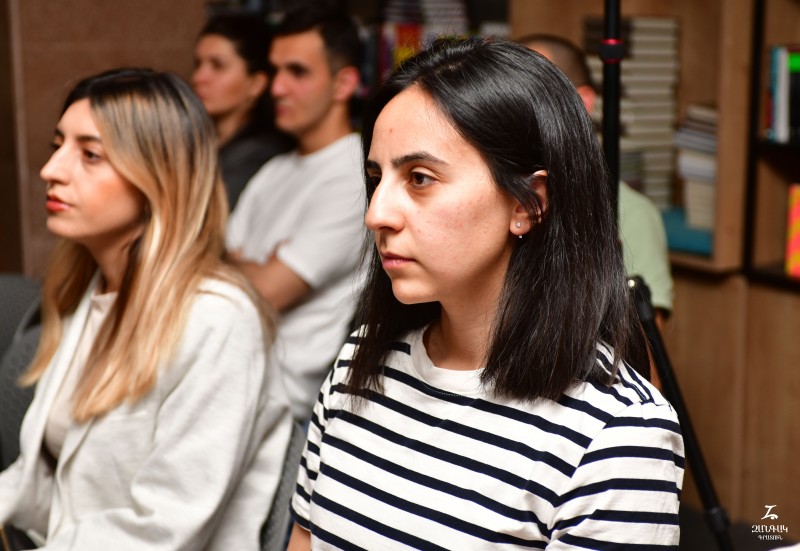
Edik Poghosyan is credited with pioneering the textual concept of urban folklore in Armenia. In this innovative approach, he crafts and preserves a distinctive form of poetry using words sourced from public spaces, courtyards, and announcements. Following the 44-day war, the artist's reflections centered on the fallen soldiers and their mothers. During this period, he immortalized the sentiments and associations related to this theme through video poetry, using the words he collected from the streets.
In the final segment of the lecture, he showcased the words and connections found in graffiti, announcements, and handwritten notes adorning the walls. He artfully compiled these elements into a one-minute presentation, which he delivered. The artist dedicated this work to the victims of the Artsakh war, the participants, mothers with children, and the missing individuals.
Read also

A Closed Community of Independent Thinkers: Newmag Launches Signature Club (Video)

Newmag Publishing Presents Two New Books on Armenia TV’s “Good Morning” Program (Video)

Paul Ignatius, the highest-ranking Armenian-American public official in US history, passes away at 104

Bonjour, Littérature! The third Francofest International Book Festival was held (photos)


